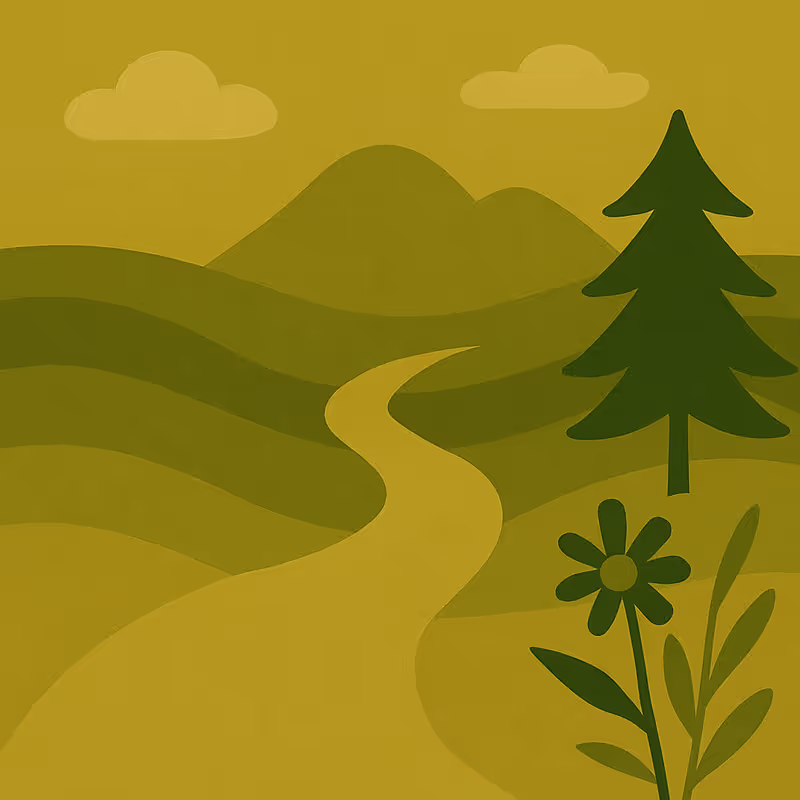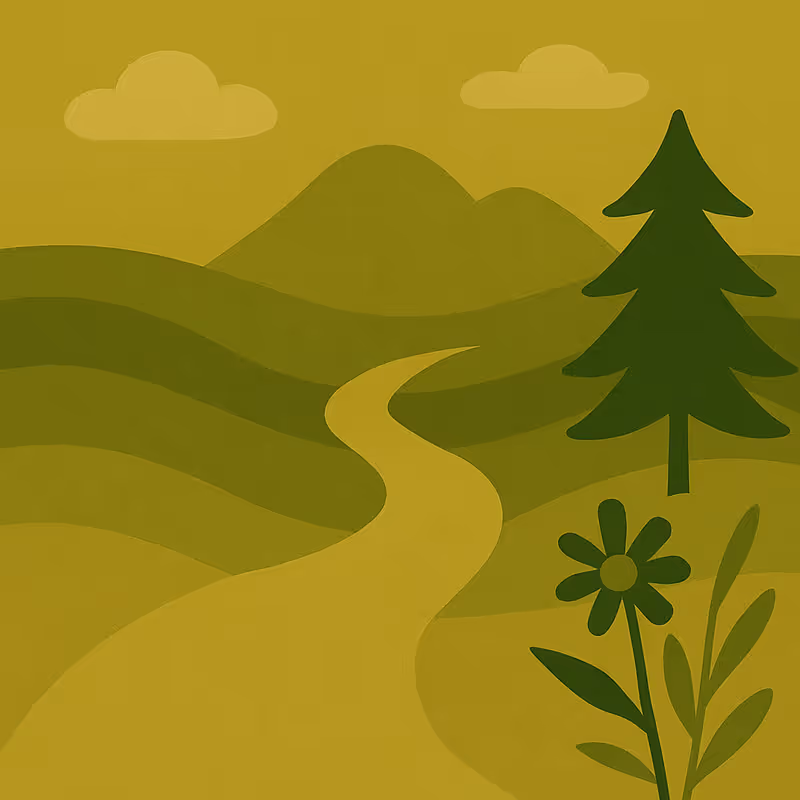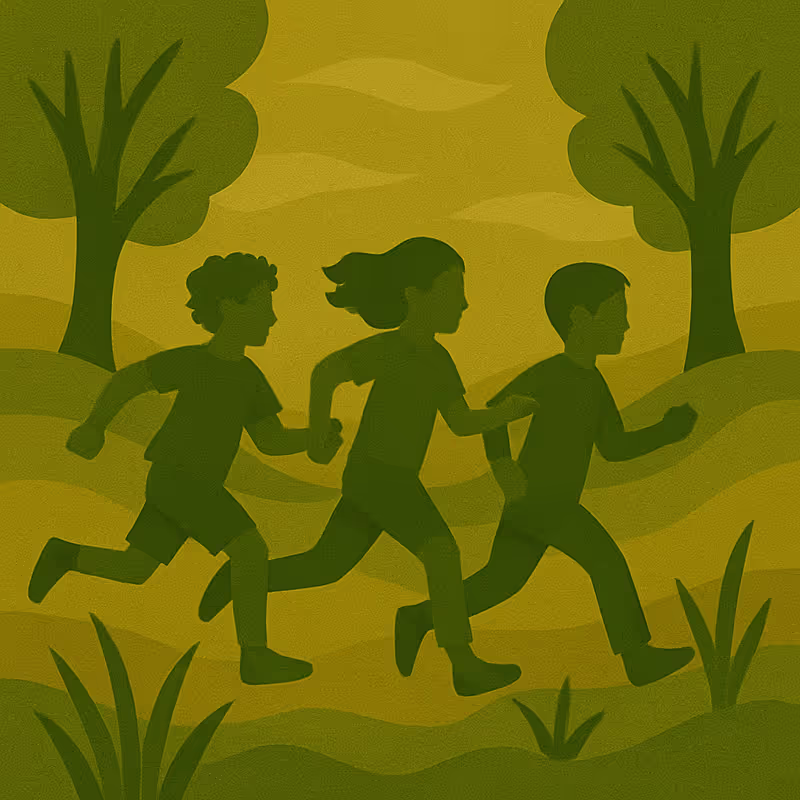Overview
This activity brings students outside of the classroom and into a biodiverse, natural space for an immersive learning experience.
Learning objectives
The hike seeks to use experiential learning to:
- Build environmental awareness
- Have students reflect on their personal connections with nature, and how they value it
- Cultivate an understanding of local biodiversity
- Promote social cohesion and inclusion
Links with the other resources and duration
This hike works best in the context of The benefits of connecting with nature module. You can either do the hike after Lesson 1 of the module, or deliver Lesson 1 during this hike. Lesson 1 has been designed for an educator to deliver outside of the classroom and comprises a short presentation and the Mindfulness activity.
You can also plan this hike as a standalone activity, or in combination with the Biodiversity and the natural world in crisis module.
Pre-lesson preparation
Ahead of the lesson:
Choose an appropriate walking route
- Try to find a route that has high levels of biodiversity (preferably away from motorways or other sources of sound pollution).
- Ensure the path is accessible and that the walk matches students’ physical capacities.
- Opt for circular routes for varied scenery and logistical ease.
- Walk the path yourself beforehand to understand the terrain and biodiversity.
- Ensure you have a map of the walking route both in physical format and on your phone.
Organise the logistics
- Plan and secure finance for travel.
- Plan the travel logistics.
- Secure enough water and food for all participants.
- Ensure another teacher or facilitator can join you.
- Obtain consent from student parents or guardians if working with minors.
- Communicate to students (and parents / guardians, if relevant) the need for weather-appropriate clothing, footwear and sun / rain protection, well in advance.
- Create and communicate an emergency plan
Assemble your materials
- Food and water
- Learning / teaching materials, such as information on local wildlife; the teaching notes for Lesson 1 of The benefits of connecting with nature module; the activity instructions for the Mindfulness activity, if relevant
- Sufficient food and water for all participants
- First-aid kit
- Maps
- Rubbish bags for ‘Leave no trace’ (see below). You can bring some bin bags and ask a few students to oversee that everyone collects their rubbish and brings it to the bin.
- Carry extra supplies for unexpected needs.
Tips for educators
- When looking for a path, consider that many regions have well established way-marked walking paths that are easy to find online.
- Consider a circular route so that there is no need to double back and walk the same path in the opposite direction.
- Prepare background information on the hike’s location, history and notable species or ecosystems.
- Ensure sufficient time for the hike - account for breaks and pauses to look at wildlife.
- Make sure people understand in advance that no music should be played during the hike.
- Have one teacher / facilitator walking at the front of the group and another walking at the back of the group.
- Don’t walk too fast - ensure the pace of the hike is adjusted to include everyone.
- Carry extra supplies for unexpected needs.
Hike plan
During the hike:
1. Reiterate the hike’s pedagogical purpose
If you plan to give Lesson 1 of The benefits of connecting with nature module outside, a good time to do it is before the hike or at the start of the hike. The lesson and the Mindfulness activity after the lesson take around 1 hour.
Share insights on the importance of connecting with nature and how the more we value nature at a personal level, the more benefits we receive from connecting with it.
Set expectations for the hike, have participants reflect on the experience of being in a natural setting - what can they hear? What can they see? How does this make them feel?
2. Engage participants during the hike
Pause at key points in the hike to discuss local biodiversity and ecosystems (biophysical qualities of nature) and knowledge of how local plants and wildlife may have been - or are still being - used by local people (the socio-cultural qualities of nature). It may be helpful to prepare some examples beforehand.
Assign roles that can rotate - have a front runner who leads the group (pacing it slowly), middle support (ensuring the group stays together) and a sweeper (who assists with those at the back).
Consider taking a break for a shared picnic and allow time for informal connection with nature. Top tip: are there any local foods that are seasonal and that grow in the region? If so, consider bringing these along as an example of the material benefits of nature and the non-material socio-cultural benefits that nature also brings.
3. Practice ‘Leave no trace’
Teach participants about the importance of the ‘Leave no trace’ practice. Ensure no litter is left behind and bring a rubbish bag to ensure all waste is taken with you if there are no bins.
Debrief
Debriefing is a collective discussion method that can help students process and make sense of their thoughts and emotions and identify next steps for action in a safe space, following creative methods and interactive lessons.
1. Conduct a group debrief after the hike
The debrief can take the form of an informal group discussion at the end of the hike, or ideally sometime after the hike. Have a look at the instructions in the separate Debriefing activity to help you organise the debrief.
2. Encourage participants to continue spending time in nature
Encourage participants to consider taking a family member or a friend on a nature hike. Emphasise to students that not all people have the same access to green space or have had the chance to build a strong connection with nature.
What can we each do to support people we know to spend more time in nature? How can we help them build a stronger connection with nature?
Further resources
- Make sure to read The benefits of nature module for educators in advance.
- For an example of a scientific study on the use of hiking in nature to develop ecological awareness, see Dirgantara et al. (2024) Communicating ecological awareness through hiking Mount Argopuro | E3S Web of Conferences.


















